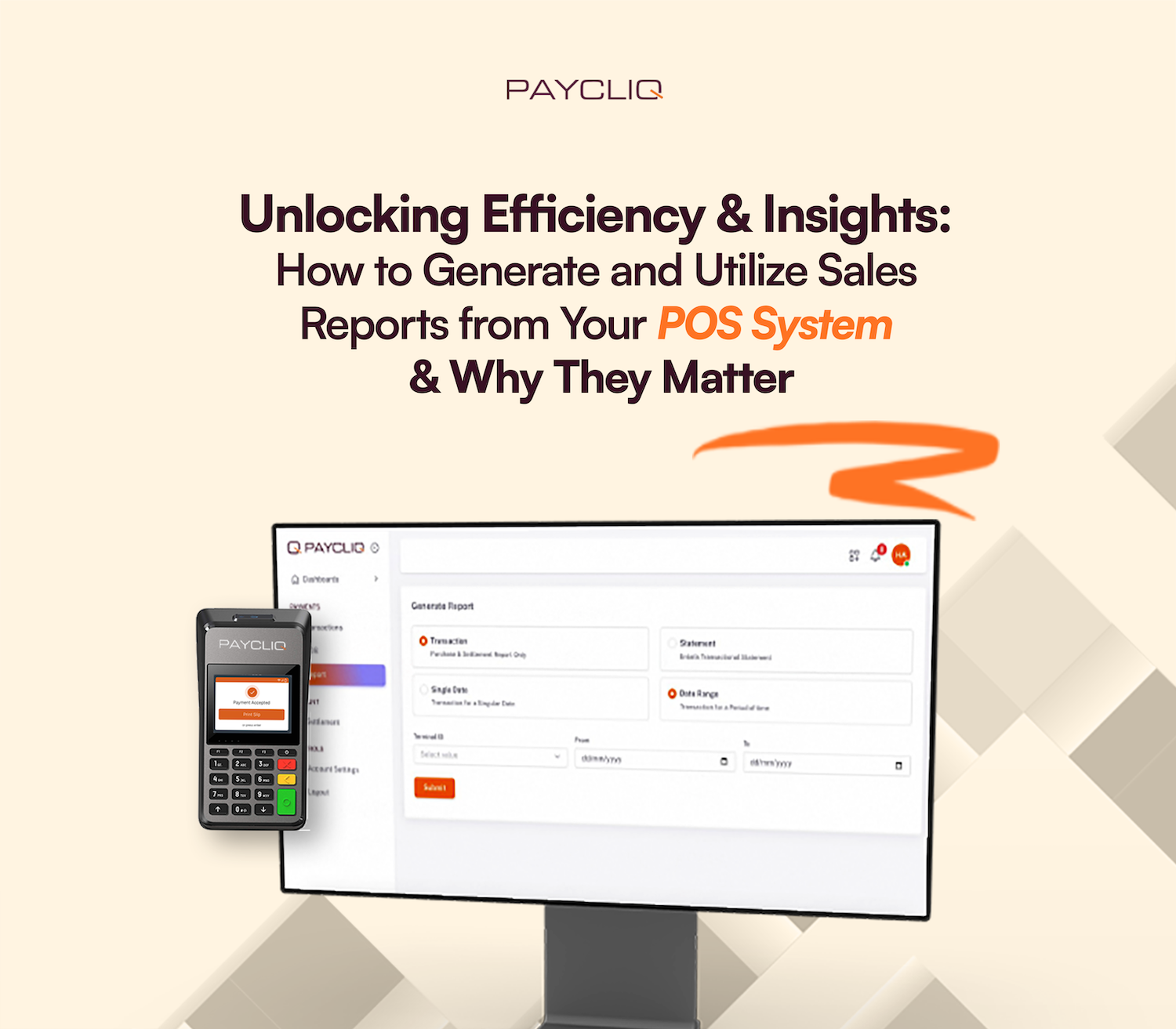Businesses are moving rapidly, and as a business owner, you should keep going. You need to keep track of your sales data, which is key for making informed decisions. It does not matter what kind of business you run, so long you use a POS system for transactions, you can generate accurate sales reports that can help you understand what is working or otherwise so that you can make necessary adjustments. Generating detailed sales reports from your POS system is simple, and in this post, we will uncover how to easily create and use sales reports to improve your business performance.
Why Sales Reports Are Important for POS System Users
Any business owner who uses the POS system for transactions should know why generating sales reports is important. Here are some;
- Data-Driven Decisions: The POS system helps users to analyse sales trends, and manage inventory. You can also optimise decision-making with the correct data you have generated.
- Performance Tracking: You can easily rate your business performance through sales data. Also, sales reports can help you check employee performance, top-selling products, and busy hours.
- Financial Compliance: It can help ensure accurate record-keeping and easy integration with accounting tools for tax purposes.
Key Sales Metrics to Track Using POS System
Below are some metrics to look out for as you use the POS machine to generate sales reports;
- Total Sales: The POS system tracks total revenue over different time frames e.g. daily, weekly, monthly etc.
- Sales by Product or Category: You can view which products or categories perform best through product reporting.
- Sales by Employee: Monitor staff performance and productivity based on sales generated.
- Sales by Location: You can compare sales performance across locations if you have multiple stores connected to one POS system.
- Average Transaction Value: understand your customers’ spending habits with the POS’s average sale per transaction report.
Step-by-Step Guide to Generating Sales Reports
Use the steps provide below to generate sales reports from your POS system
Step 1
Log into your business account from the PayCliq’s web or mobile app.
Open the Paycliq application
Step 2:
Click on ‘Sales Record’ to generate the report you want.
Step 3:
Select the report type. PayCliq offers a range of reports, including daily sales, product/category breakdowns, employee sales, and custom reports.
Step 4:
Select the time range and filters in the top right corner. Customise the report by setting filters such as date range.
Step 5:
Generate and export the report in your preferred format (PDF or Excel) once you have customised the report and clicked “Generate.”
PayCliq’s real-time sales reporting keeps you updated on your sales anytime and anywhere.
Another feature of the POS system is generating an End-of-Day (EOD) receipt. Below are simple steps to generate an EOD report;
- Open the PayCliq app
- Click on ‘More’
- Select ‘End-of-Day’ and generate a report containing all daily transactions.
- To print the EOD receipt for previous days, click the filter icon in the top right corner of the screen and select your preferred date.
Benefits of Using the PayCliq’s Automated Sales Reporting
- Immediate Access to Real-Time Data: PayCliq updates sales data in real-time, allowing fast, data-driven decision-making.
- Time-Saving: Automating reports in PayCliq reduces manual work and reduces human errors.
- Seamless Integration: PayCliq’s POS integrates with third-party software to ensure seamless sales data syncing for accounting purposes.
Common Challenges with Sales Reports and How PayCliq Solves Them
- Data Accuracy: PayCliq ensures correct data entry across the POS system. Its user-friendly interface minimises errors and simplifies order entry.
- Customisation Limitations: PayCliq offers a range of preset reports, but you can further customise your reports by integrating with analytics tools or exporting data for deeper insights.
- Handling Large Data Sets: While some POS may not be able to handle large volumes of data, PayCliq filters options and helps break down data into manageable reports for businesses with a high volume of transactions.
Our Take
Generating sales reports from your POS has a lot of benefits for your business. You will gain valuable insights into your business and employee performance, to enable better business management and operational efficiency.
Generating sales reports from your POS system provides insights into your business performance by tracking total sales, top-selling products, customer trends and busy hours. You can generate your sales data by accessing the reporting feature on your POS, filter data by date or category, and view the key metrics mentioned above. These reports help optimise inventory, pricing, and employee performance, which supports informed decision making and financial planning.



What do you think?
It is nice to know your opinion. Leave a comment.